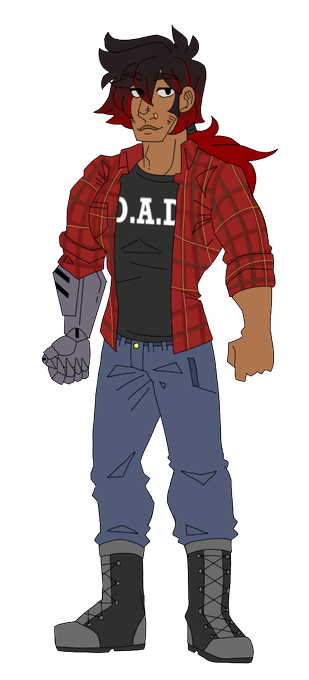Curtis'のTwitterイラスト検索結果。 153 件中 7ページ目
@TownhouseWindow @thegentleauthor @ChelseaFringe It's fascinating to think that many of the plants Liz Davis located in 2017 are recorded in William Curtis' 18th century flora of London! https://t.co/ZNQlPQmpbb via @BioDivLibrary cc: @theBotanicalMag
Curtis's Botanical Magazine (first published in 1787 as The Botanical Magazine) is the world's longest-running botanical magazine. Its notable #SciArt is reproduced from original artworks by leading botanical artists: https://t.co/QJlwCt3fNQ #BotanicalArtWorldwide
It's #CherryBlossom Season, so for #BotanicMonday we're featuring the North Japanese hill cherry (Prunus sargentii). #SciArt by Matilda Smith & lithographed by John Nugent Fitch for "Curtis's Botanical Magazine" v. 137 (1911). In #BHLib via @mobotgarden: https://t.co/cKHP6NeC4W
Konjac (Amorphophallus konjac), also known as Devil's Tongue and Voodoo Lily for #FloraFriday! #SciArt by Walter Hood Fitch for Curtis's Botanical Magazine, Vol. 101 (1875). Contributed to #BHLib by the Peter H. Raven Library of the @mobotgarden: https://t.co/uKQJmy03kO
Red bird of paradise (Caesalpinia pulcherrima). #SciArt by Sydenham Teast Edwards for Curtis's Botanical Magazine, v. 25 (1807). In #BHLib via @mobotgarden: https://t.co/BzjJKqkNVr #botany #botanicalart
#Orchids (Cirrhopetalum fletcheranum). #SciArt by Matilda Smith for Curtis's Botanical Magazine, Vol. 141 (1915). Contributed to #BHLib by the Peter H. Raven Library of the @mobotgarden: https://t.co/0r87SeTi3R -- #WomensHistoryMonth #WomeninNatHist #WomeninScience
Yate (Eucalyptus cornuta) is native to Western Australia. #SciArt by Walter Hood Fitch for "Curtis's Botanical Magazine" v. 101 (1875). Contributed to #BHLib by @mobotgarden: https://t.co/3AApL9D3oE #BotanicMonday #BHLCurtis #plantsci
#BotanicMonday: Rhododendron discolor is native to many high altitude regions of #China. #SciArt by Matilda Smith for Curtis's Botanical Magazine, Vol. 143 (1917). Contributed to #BHLib by the Peter H. Raven Library of the @mobotgarden: https://t.co/LT7c3qtv9C
Here's a gem for #FloralFriday, and a welcome respite from the snow! From
Curtis's botanical magazine, it's Metrosideros; a showy plant worthy of #DrSeuss! https://t.co/Sq3haHXvJo via @internetarchive @BioDivLibrary @mobotgarden #snowday
Curtis's botanical magazine. By Curtis, William., et all. London; New York [etc.]: Academic Press [etc.] @BioDivLibrary https://t.co/Dq7tQ36DHj
4. Any villain OCs?
I have quite a few (seeing as I make OCs almost exclusively to write full stories and worlds about) but currently the most "relevant" is the dragonborn princess Diana, Curtis' adoptive mother in Luna Twins!
Lilies (Lilium davidii) for #BotanicMonday! #SciArt by Matilda Smith for Curtis's Botanical Magazine, Vol. 126 (1900). Contributed for digitization by the Peter H. Raven Library of the @mobotgarden: https://t.co/mP70TuSWNS -- #MBG #WomeninBHLib #WomenInScience #WomenArtists
The Fuchsia Grevillea (also known as "Jingle Bells") must be Australia's most Christmassy plant! #AussieXmasTree Image: Curtis's Botanical Magazine, 1913. https://t.co/RAL7KUkGbW via @BioDivLibrary @mobotgarden @kewgardens #BHLCurtis
Mottlecah, Eucalyptus macrocarpa. One of Australia's most beautiful & Christmassy plants. #AussieXmasTree Image: Curtis's Botanical Magazine, 1847. https://t.co/SqBIPVZlKq via @BioDivLibrary @mobotgarden @kewgardens #BHLCurtis
Bottlebrushes: a clean sweep for Australia's most Christmassy plant? #AussieXmasTree Image: Curtis's Botanical Magazine 1815. https://t.co/hstpGiQ39N via @BioDivLibrary @mobotgarden @kewgardens #BHLCurtis
Perhaps this is Australia's most Christmassy plant? Mondurup Bell, Darwinia macrostegia. #AussieXmasTree Image: Curtis's Botanical Magazine, 1855. https://t.co/El1T5xHGjW via @BioDivLibrary @mobotgarden @kewgardens #BHLCurtis
Sturt's Desert Pea: a firm favourite for Australia's most Christmassy Plant. #AussieXmasTree Image: Curtis's Botanical Magazine 1858. https://t.co/iCvCO5O4F5 via @BioDivLibrary @mobotgarden @kewgardens #BHLCurtis
Is Australia's Firewheel Tree (Stenocarpus sinuatus) our most festive plant? #AussieXmasTree Image: Curtis's Botanical Magazine, 1846. https://t.co/QvMDYnfQDN, via @BioDivLibrary @mobotgarden @kewgardens #BHLCurtis
A definite contender for Australia's most Christmassy plant: Christmas Bells, Blandfordia nobilis (from Curtis's Botanical Magazine 1817 https://t.co/zijWeHNvdn via @BioDivLibrary @mobotgarden @kewgardens) #BHLCurtis

































